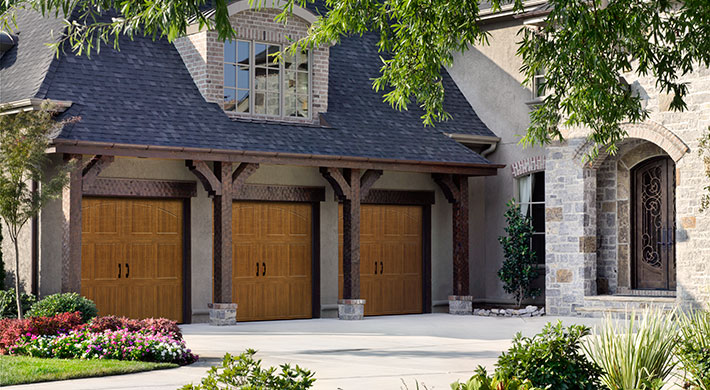Maintaining and repairing your residential garage door is essential for ensuring its longevity and smooth operation. In this guide, we’ll cover key preventive maintenance practices, help you recognize common garage door problems, and identify critical safety components that require regular checks. By staying proactive with simple maintenance tasks and being aware of early warning signs, you can save on costly repairs and enhance the overall safety and efficiency of your home. Let’s dive into expert tips for keeping your garage door in top shape.
1. Essential Maintenance Tips for Your Residential Garage Door
Maintenance is key to extending the lifespan and ensuring the smooth operation of your residential garage door. Routine care can prevent costly repairs and enhance the safety and security of your home. Here are some essential maintenance tips to keep your garage door functioning optimally.
1.1 Regular Lubrication of Moving Parts
Lubricating the moving parts of your garage door is crucial for reducing friction and preventing wear and tear. Focus on the rollers, tracks, hinges, and springs, using a high-quality lubricant specifically designed for garage doors. This simple maintenance task can significantly reduce noise and ensure that your door operates smoothly. Make it a habit to lubricate these parts at least twice a year to maintain their performance and longevity.
1.2 Checking and Tightening Hardware
Over time, the hardware of your garage door can loosen due to constant movement and vibration. Regularly inspect all the bolts, nuts, and screws, and tighten them as necessary. Pay special attention to the brackets that hold the door tracks to the wall and ceiling, as well as the bolts that secure the door opener unit. Ensuring that all hardware is properly tightened will prevent more significant issues down the line and maintain the structural integrity of your garage door system.
1.3 Inspecting and Replacing Weatherstripping
Weatherstripping around your garage door serves multiple purposes, from keeping out debris and pests to improving energy efficiency by sealing gaps. Inspect the weatherstripping along the sides and bottom of your garage door for signs of wear and tear, cracks, or brittleness. If you notice any damage, replace the weatherstripping promptly to maintain a proper seal. Not only will this help in keeping your garage clean and insulated, but it will also protect the door and its components from the elements, thereby extending their lifespan.
2. Common Garage Door Problems and How to Fix Them
Even with regular maintenance, it’s not uncommon for garage doors to encounter various issues over time. Identifying and addressing these problems promptly can save you from costly repairs and potential safety hazards. Here are some common garage door problems and how to fix them.
2.1 Dealing with Noisy Garage Doors
A noisy garage door can be more than just an annoyance; it can also indicate underlying issues that need attention. Common causes of noisy doors include unlubricated parts, loose hardware, or worn-out rollers. To fix this, start by applying a high-quality lubricant to the moving parts, such as the rollers, hinges, and tracks. Next, check all the nuts and bolts, tightening any that are loose. If the noise persists, inspect the rollers for signs of wear; if they appear damaged, consider replacing them with quieter nylon rollers. Addressing these issues promptly can keep your garage door operating smoothly and quietly.
2.2 Fixing Garage Door Alignment Issues
An off-track or misaligned garage door can disrupt its operation and pose a safety risk. Alignment issues are often caused by tracks that have become crooked or loose over time. To realign your garage door, begin by disconnecting the door opener and manually lifting the door. Inspect the tracks to ensure they are level and parallel. If they are not, use a rubber mallet to gently tap the tracks back into alignment. Tighten any loose brackets and screws that hold the tracks in place. Once the tracks are realigned, reconnect the door opener and test the door to ensure it opens and closes smoothly. Properly aligned tracks are crucial for the safe and efficient operation of your garage door.
2.3 Addressing Sensor and Opener Malfunctions
Sensors and openers play a vital role in the automated function of your garage door, but they can sometimes experience issues. Common problems include dirty sensor lenses, misaligned sensors, and malfunctioning openers. To address sensor issues, start by cleaning the sensor lenses with a soft cloth to remove any dirt or debris. Ensure that the sensors are properly aligned by checking that the LED lights on both sensors are illuminated. If they are not, adjust the sensors until the lights are solid and unblinking. For opener malfunctions, check the power supply and ensure the opener is plugged in and receiving power. If the opener still does not function, refer to the user manual for troubleshooting tips or consider consulting a professional technician. Keeping sensors and openers in good working condition is essential for the safety and convenience of your garage door system.
3. When to Call a Professional for Garage Door Repairs
While some garage door issues can be addressed with DIY solutions, others require the expertise of a professional. Knowing when to call in a qualified technician can save you time, prevent further damage, and ensure your safety. Here are situations that definitely call for professional intervention.
3.1 Identifying Broken Springs and Cables
Broken springs and cables are among the most dangerous and critical issues that can occur with your garage door. Springs are under tremendous tension and can cause severe injury if handled improperly. If you notice your garage door struggling to lift, or you see a visible break in the springs, it’s a sign that they need to be replaced. Similarly, frayed or broken cables can cause the door to malfunction or collapse. Both of these problems require specialized tools and expertise for safe and effective repair. Attempting to fix broken springs or cables yourself could result in serious injury or damage, so it’s best to call a professional technician immediately.
3.2 Diagnosing Electrical Issues
Electrical problems with your garage door opener or sensors can be complex and hazardous if not handled correctly. Issues such as intermittent operation, unresponsive door openers, or malfunctioning safety sensors often stem from electrical faults. Diagnosing these problems typically involves inspecting the wiring, circuit boards, and power sources, tasks that should be performed by someone with electrical training. If you’re experiencing issues that point to electrical malfunctions, it’s crucial to contact a professional. They have the skills and tools necessary to diagnose and repair electrical issues safely, ensuring your garage door remains reliable and secure.
3.3 Handling Structural Damage and Wear
Structural damage to your garage door can compromise its integrity and safety. Whether it’s due to an accident, extreme weather conditions, or natural wear and tear, issues like bent tracks, damaged panels, or a sagging door need professional attention. A misaligned or structurally compromised garage door can lead to more severe problems and even pose a risk to your safety. A professional technician can assess the extent of the damage and recommend the most effective repair or replacement options. Their expertise ensures that the door is restored to its optimal condition, providing both functionality and peace of mind.
Are you experiencing issues with your garage door? Don’t wait for the problem to escalate! At Door Ace, we’re here to help you get your garage door back in perfect working order. Contact us today for a free consultation with one of our expert technicians. We’ll assess the issue, provide a detailed solution, and ensure your garage door is operating safely and efficiently. Call us now at 604-343-2771 or 778-588-5754 to schedule your free consultation and put your garage door worries to rest. Your safety and satisfaction are our top priorities!




